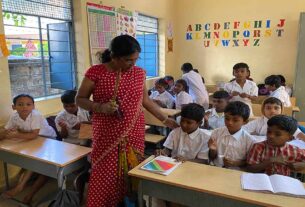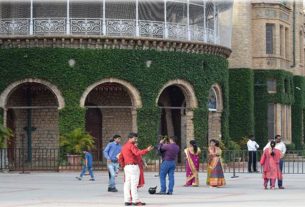Lack of funding has led to delay in implementation of the marriage incentives scheme for devadasis’ children.
Last year, there has been a drop of 53 percent in the number of approved applicants receiving money under the Incentive for the Devadasi Children’s Marriage, according to the Social Welfare Department (SWD), Karnataka.
This scheme applies to former devadasis’ children who marry a Hindu Scheduled Caste (SC) or a non-SC person. If a marriage takes place after April 1, 2018, a woman would get Rs. 5 lakhs and a man Rs. 3 lakhs under this scheme. In 2019, 847 applications were approved, of which 553 applicants received the money. In 2020, 918 applications were approved, out of which 112 applicants received the amount.

The SWD attributes this to lack of funding during the pandemic. “This scheme was launched in 2018 to combat the discrimination devadasis’ children face. While we send funds promptly after receiving applications, last year the district offices did not have enough money to cover every application made,” said Tyagraj, an officer at the Kalyana Kendra of the SWD.
Non-government organizations (NGOs) believe this situation is detrimental to a community that has already suffered a lot of discrimination. “The government has come up with a lot of schemes for the devadasis like housing, pensions—and and now this marriage scheme. The ground reality is that none of these schemes fully help the devadasis. The marriage incentive scheme was helping but the process is very slow,” said Chandalinga Kalalbandi, the convener of Vimuktha Devadasi Vedhike.
The devadasi system is an ancient tradition that binds young girls to a temple. They are considered married to the deity. These girls live a life of sexual exploitation and poverty in the name of religion. The tradition demands that when the girls attain puberty, their virginity is sold to the highest bidder—usually the priests of the temple.
This practice was outlawed by The Karnataka Devadasis (Prohibition of dedication) Act, 1982, but studies show it is still prevalent in many parts of the country. Reports said that a census by the Karnataka State Women Development Corporation shows that 9733 devadasis still live in Karnataka.
One such woman is 36-year-old Dugama Dothila of Koppal district. As a child, she contracted polio and lost her left leg. Her parents bound her to the Yellamma temple in the Gudi ritual—it is where a girl is inducted into the devadasi tradition—when she was just 13 years old. She was raped by multiple priests, claiming that she was their temple’s property. Finally, one of the priests took her out of the system by claiming she was exclusively his. She was never married. “My life has been a difficult one. All I get from the government is a pension of Rs. 1500 that too paid every four months now because of the pandemic,” she said.
She added that daughters of devadasis are also pushed into the same tradition for money. “I have a son, but I tell all my friends to not inflict the same fate as ours on their daughters. This marriage incentive scheme would be useful if they actually paid the money,” she said.
While the scheme applies for both men and women, it is women who benefit more, said Kashava of the Mahila Abhivrudhi Mattu Samrakshana Samsthe (MASS)—an association of ex-devadasi women. “When a girl is inducted in the devadasi tradition, any daughters she may have in the future are automatically considered property of the temple. The incentive gives their daughters a way out,” she said.
The scheme has challenges of its own, said Abhay Kumar of the Navajeevana Mahila Okkoota (NJMO) of the Infosys foundation—an organization that works for devadasis’ children. “While the scheme has been useful, it is not a permanent solution for their empowerment. There are cases of the man leaving the girl after the marriage with the money. There is nothing in the scheme to stop that from happening,” he said.
Schemes and policies need to be implemented more effectively, according to Yogita, a women’s rights activist. “There are many lacunae in such monetary compensation schemes. The government must ensure that benefits reach the recipients,” she said. She added that there needs to be a fundamental change in how we approach the women’s problems. “We need programs like education, skill development and easier loans—that empower us to stand on our own feet,” she said.





The plight of these marginalized women need to be brought to the limelight and necessary assistance and continued support provided to them.,thank you mrinmayee for shining light on this pressing issue. God bless you